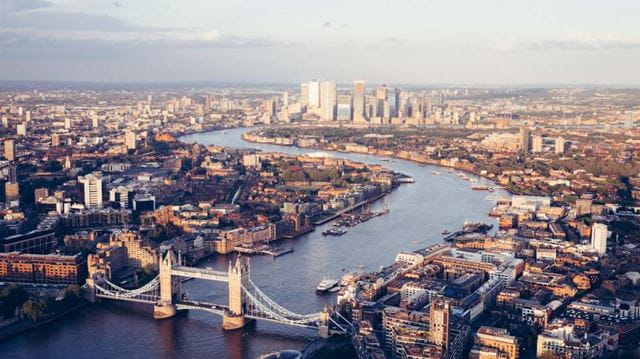
From fake regency houses and ancient oak trees to chewing gum art and underground roman temples, London plays host to countless unusual landmarks hidden in plain sight
But with so much to see, it can be hard to know where to begin when seeking out some of the most interesting sights in London that you might not have heard of. That’s why we’ve collated this list of the most thought-provoking, unusual and free things you can see while exploring the big smoke.
1. A ship-shaped house
Providing the inspiration for the eccentric Admiral Boom character from Mary Poppins, Admiral’s House is a piece of uniquely maritime architecture nestled in the leafy streets of Hampstead. Built in 1700 the house was modified by naval captain Fountain North in 1805 adding a quarterdeck, bulwarks and portholes to remind him of his time at sea.
2. Brixton windmill
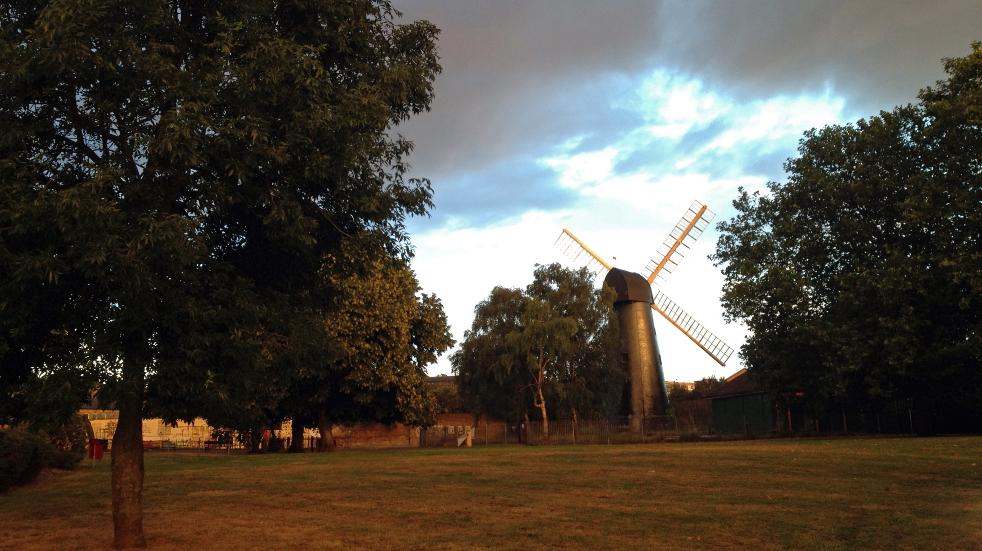
Harking back to the area’s farming history, this 200-year-old windmill sits at the end of a residential street in Brixton. Having undergone extensive restorations since 2010, this bucolic landmark amazingly still produces wholemeal flour today that’s available to buy in several local shops.
3. Banksy’s all over
His work scattered all over the city, street artist Banksy has found a second home in London. From Tower Bridge to Mayfair, some of Banksy’s most famous graffiti art can be enjoyed in unexpected places all over the capital – even better, there are lots of free street art tours you can join to see it all in one go.
4. A piece of Imperial history
Installed in 1866, the Public Standards of Length is an unusual brass placard at the Royal Greenwich observatory. Originally created as a way for prospective measurers to calibrate their scientific instruments, the plaque offers a standardised measurement of imperial yards, feet and inches.
5. Downing Street doppelganger
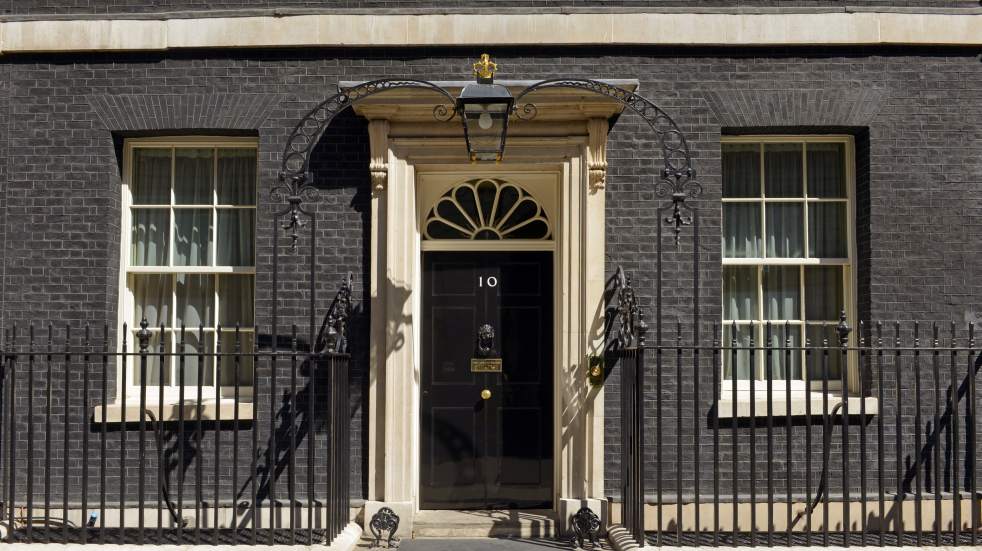
Confusingly familiar, you’d be forgiven for thinking you’d taken a wrong turn and stumbled upon the UK’s most famous address arriving at number 10 Adam Street just off Strand. You’ll find no PMs (or parties) here however, this front door is a Downing Street imposter that’s impressively close to the real deal – perfect for photo opportunities!
6. Flying underground carriages
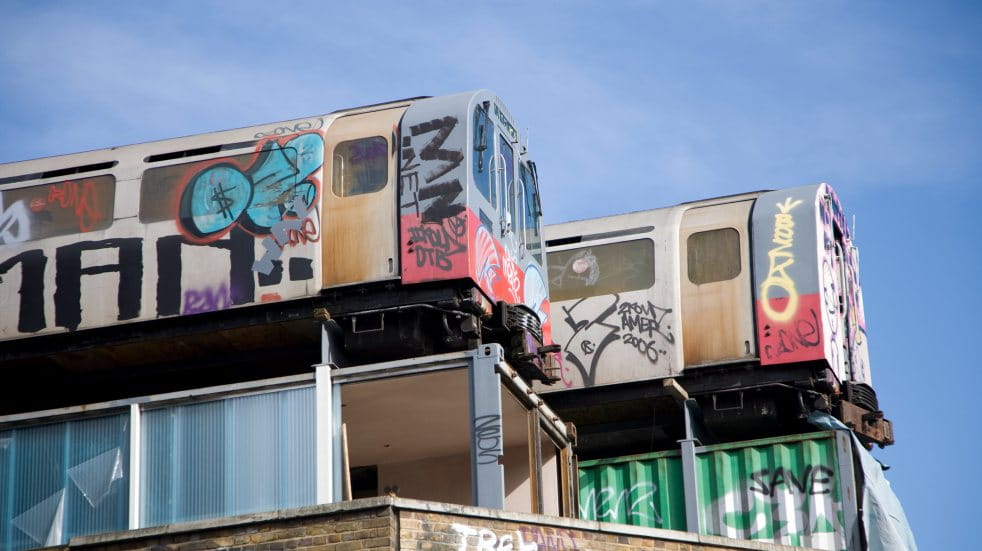
Positioned atop the former Broad Street Rail Viaduct, above the exciting Village Underground (a cultural centre, workspace and music venue in its own right) are several former Jubilee-line carriages. Available to hire as studio space, the carriage’s incongruous placement now forms a memorable part of the skyline in Shoreditch.
7. Broad Street Cholera pump
A remarkable piece of Victorian scientific history, the Broad Street water pump marked one of the first times the link between dirty water and the spread of diseases like Cholera was established. The work of Dr John Snow (linking local cases of cholera to the contaminated pump) went on to inform sanitary policy for years to come. There’s also an excellent pub adjacent to the pump named after the doctor, himself.
8. A rolled-up bridge
Completed in 2004, the Rolling Bridge is a unique piece of dynamic architecture over the Grand Union Canal forming part of the development of Paddington Basin. Recognisable for its unique rolling motion (allowing canal traffic to pass beneath it), the bridge in action must be seen to be believed.
9. A toxic ski slope
A toxic spoil heap created by the now-defunct Beckton Gas Works; this manmade hill gained the name ‘Beckton Alp’ after a dry ski slope was opened on it in 1989. Sadly, abandoned today, this bizarre piece of industrial history is now home only to some protected wildlife and the remains of the ski slope.
10. Animals in War Memorial
A unique memorial to animals that lost their lives in various conflicts throughout history, the Animals in War Memorial is located just outside Hyde Park and features an arresting sculpture of a war horse alongside a wall of silhouettes of other animals lost during war.
11. The Seven noses of soho
Originally created by artist Rick Buckley in 1997, the seven noses of Soho were installed covertly in protest of extensive CCTV surveillance in London. Not all strictly located in Soho, finding them is quite the feat and a great way of looking at the city in a different angle for an afternoon.
12. A pirate’s final resting place
The site of various grisly executions, the Site of Execution Dock in Wapping was the final destination for numerous pirates and smugglers. Prisoners were marched along the Thames to this area of foreshore before being hanged and left as a warning to other criminals in a practice that continued as late as 1830.
13. A pastel-hued river crossing
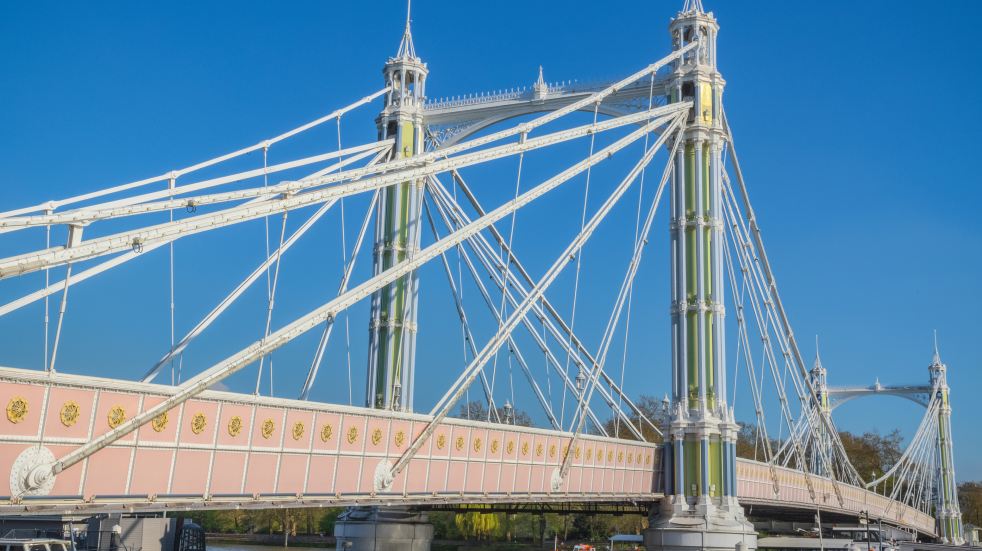
One of the oldest suspension bridges in London (and one of the most beautiful) Albert Bridge connects Chelsea to Battersea Park. Finished in a unique pastel pink, blue and green colour scheme, the bridge has a rich history including being featured in films like A Clockwork Orange and Sliding Doors.
14. A piece of WW2 history
Once a common sight during World War II, the signs directing the public to shelters in Smiths Square near Westminster today provide a faded but harrowing reminder of the darkest days of the Blitz.
15. The Churchill arms
Adorned with £25,000 of flowers every year, Kensington’s The Churchill Arms pub sets itself apart from the competition with a botanical façade that’s impossible to ignore. Better seen than described, the pub is embellished with a total of 100 flowerpots, 48 window boxes, and 42 hanging baskets.
16. Millennium Bridge chewing gum art
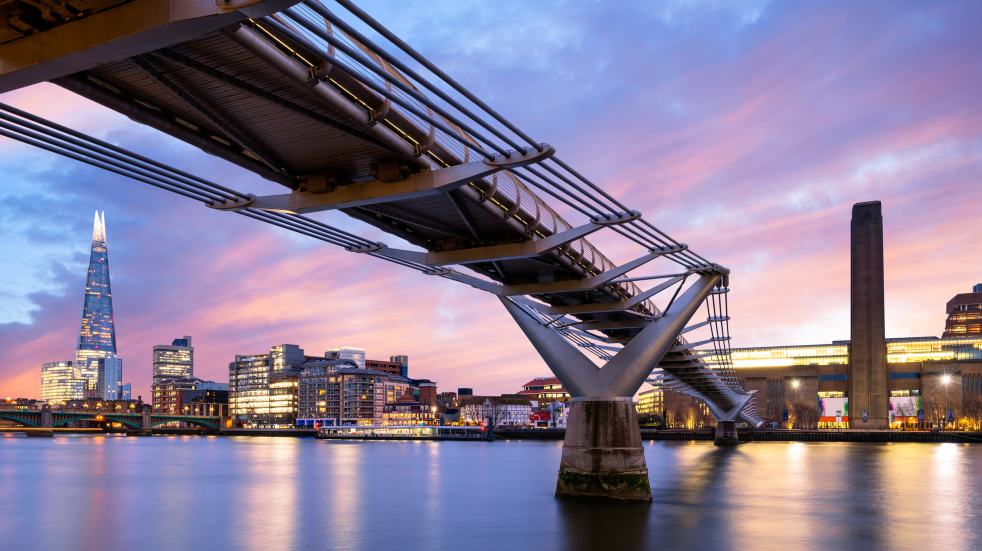
One for the eagle-eyed, Ben Wilson’s chewing gum art on the Millennium Bridge takes litter and turns it into something beautiful. Consisting of many tiny paintings done on discarded gum across the bridge’s span, it’s intricate work that’s well worth keeping your eyes peeled for.
17. A set of vengeful gargoyles
Built by architect Ernest Augustus Runtz in 1893, the Cornhill Demons are reputed to have been created as revenge against a local vicar. The vicar’s objections to the building’s boundaries (supposedly incurring on those of his church) led to delays and increased costs, causing Runtz to include these creepy figures in the construction (including one that’s supposedly modelled on the vicar himself!).
18. Speakers’ corner
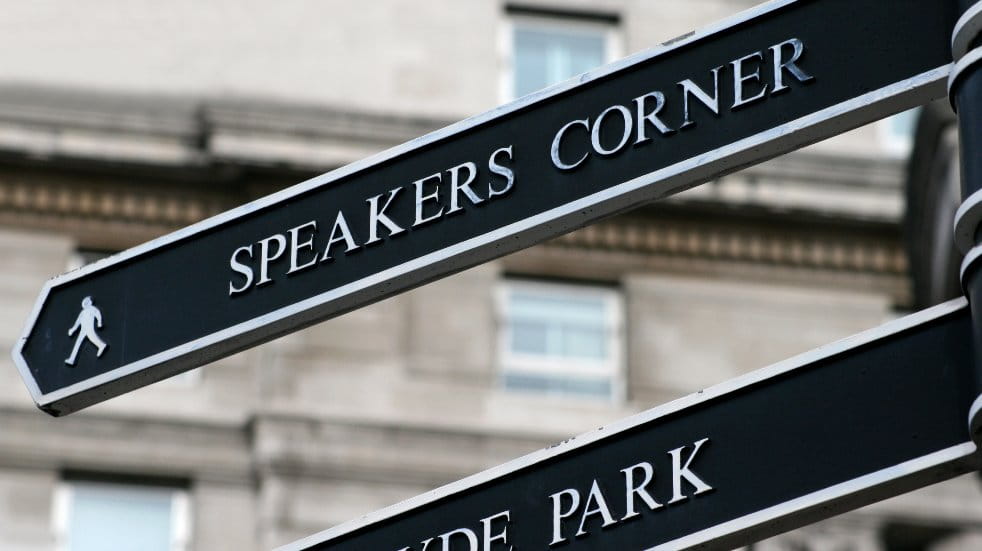
Having hosted historic figures including Karl Marx, George Orwell and Vladmir Lenin, Speakers’ Corner continues to host public free speech, acting as the terminus for many marches and protests to this day.
19. Whitechapel fatberg manhole cover
Fatbergs (large masses of solid waste in the sewerage system) are not typically listed on many lists of things to see in any city. But when a 130-ton monster fatberg was discovered in 2017 it became the stuff of legend, so much so that it’s now commemorated by a specially-cast manhole cover created by Thames Water.
20. A dog that caused a riot
Occupying a little-known spot between the pump house and the Old English Garden in Battersea Park is the Brown Dog Statue, a tribute to a riot cause by medical students in 1906 over the ethics of vivisection.
21. Frost Fair murals
Beneath Southwark bridge are a series of carved stone murals created to commemorate the famous Frost Fairs which took place on the frozen Thames between 1550 and 1850. The murals feature typical scenes from the frozen festival alongside a specially written poem about this unique time in history.
22. An Elizabethan ship
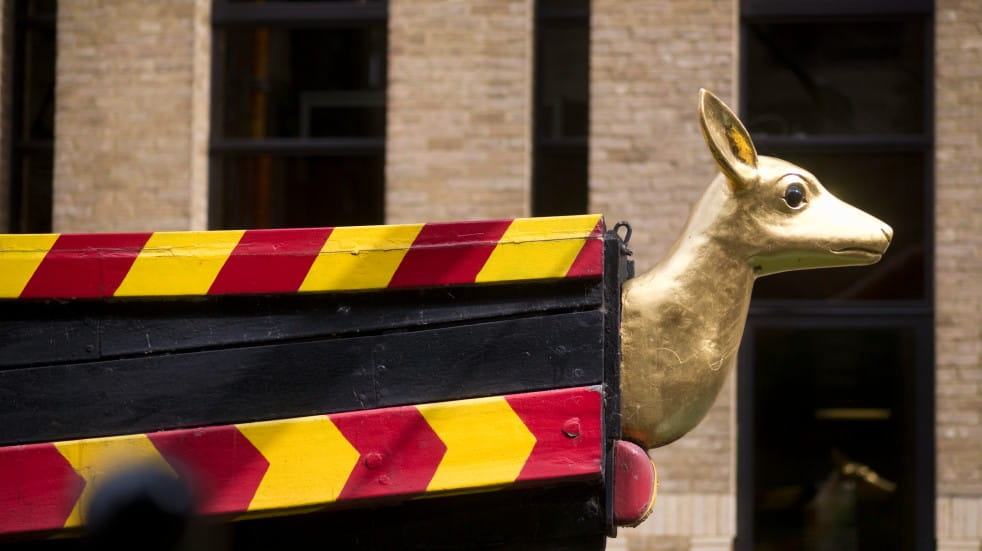
A replica of the Golden Hinde, famously captained by Sir Francis Drake on his around-the-world voyage can be found in St. Mary Overie Dock on the Southbank. A fully functioning ship, this copy of the 16th-century vessel has covered more miles than its namesake since its launch in 1973.
23. An Italian terrace in Hampstead
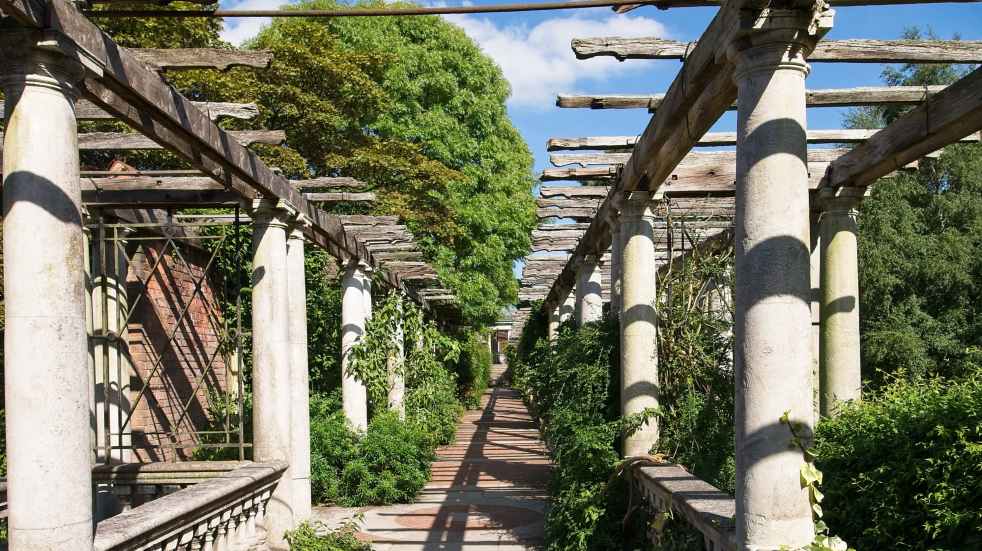
Constructed on the orders of wealthy soap magnate Lord Leverhulme in 1904 as a terrace for his nearby mansion, Hampstead Pergola is an Italianate construction with excellent views of the heath. Having fallen into disrepair, management was taken over by the City of London in 1989 and it has been open to the public ever since.
24. A magical ancient Oak
Designed by Ivor Innes in 1930, the Elfin Oak is a sculpture created from the hollowed out trunk of an ancient oak tree. Bedecked with various tiny mythological creatures, this Grade II listed monument is free to visit in Kensington Gardens.
25. A most confusing traffic light
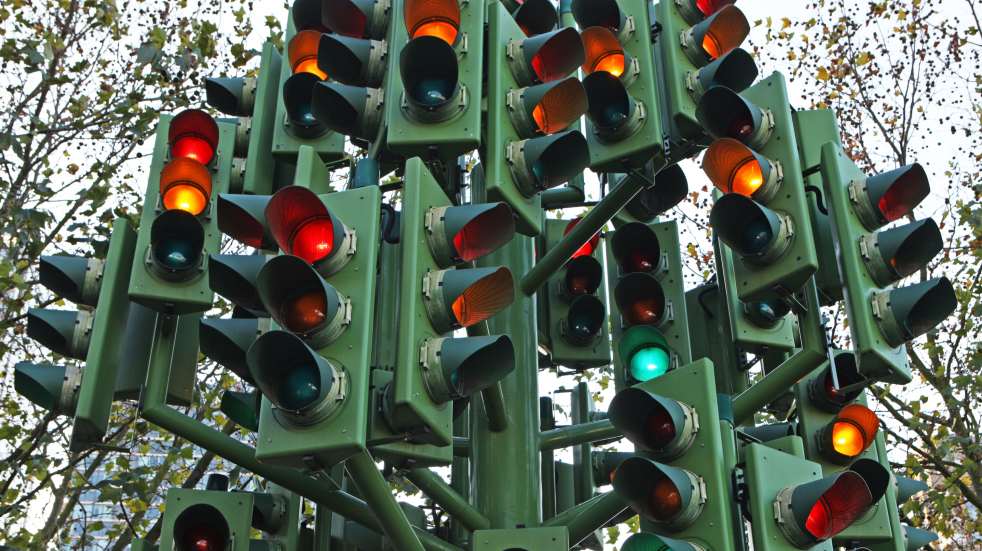
Eight metres tall, verdant green and with 75 “branches” (sets of traffic lights) the Traffic Light Tree can be found in Poplar. Designed by French artist Pierre Vivant, it aims to reflect the natural landscape of plane trees that surround it.
26. Ruins of St. Dunstan
A church unlike any other in the city, the ruins of St. Dunstan are filled with stunning greenery instead of church pews. Hit by a German bomb in 1941, today only the tower, steeple and north and south walls remain standing. What’s left is a beautiful and serene park perfect for a break from the busy city.
27. A place of Marxist pilgrimage
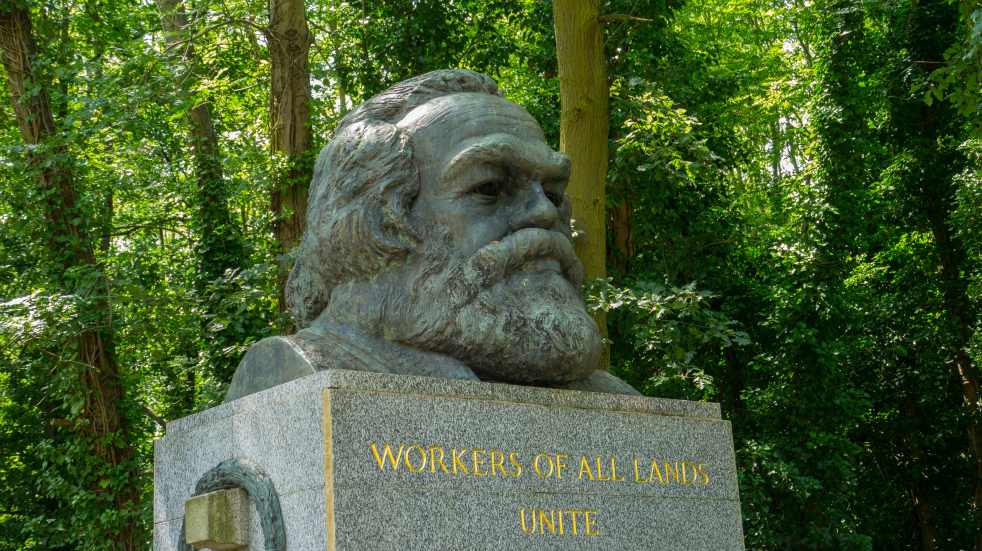
One of the most famous graves in Highgate cemetery, the tomb of Karl Marx consists of a monumental bronze bust of the philosopher’s head atop a large marble plinth. Inscribed with the final words of The Communist Manifesto, the grave is now a place of pilgrimage for followers of Marxist ideology.
28. Ruins of a Victorian marvel
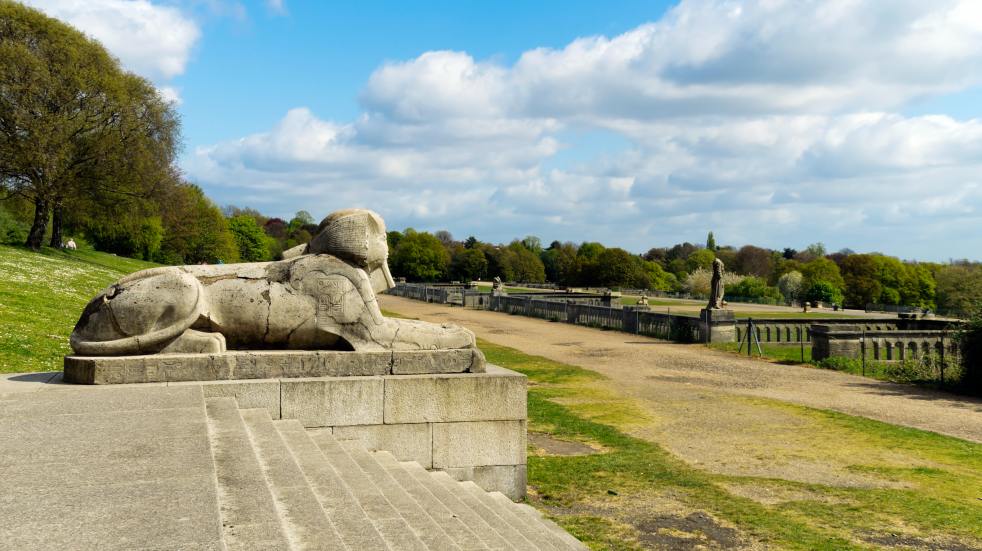
Once a masterpiece of Victorian engineering, the original Crystal Palace was sadly destroyed by fire in 1936. What remains at the site, however, is a marvellous park featuring the very first attempts at reconstructing dinosaurs through sculpture, based on fossils found during the period.
29. A monument to selflessness
Containing a poignant memorial to selfless acts, Postman’s Park is one of the few remaining open spaces in the old City of London. Consisting of 54 plaques, each honouring an ordinary individual who did something extraordinary: gave their life in the hopes of saving someone else.
30. Hyde Park pet cemetery
Created by the then-park gatekeeper, Hyde Park pet cemetery is a touching graveyard of beloved pets buried between 1881 and 1915. Hidden in plain sight in the city’s largest public space, it features the graves of four legged friends with amusing names including Bogie, Smut and Fattie (to name just a few).
31. A pair of fake houses
Unassuming to the untrained eye, 23-24 Leinster Gardens in Kensington Gardens, are not the regal homes they first appear to be. Only five feet thick, these elegant frontages were in fact built to cover an open-air section of the newly completed Metropolitan line in the 1860s.
32. A Kubrickian underpass
Otherwise unremarkable, fans of Stanley Kubrick’s 1971 film A Clockwork Orange will instantly recognise the Wandsworth roundabout underpass. Featuring as the backdrop to one of the film’s most famous and harrowing scenes, this piece of modernist infrastructure is a must-see for fans of the movie.
33. A giant scribble
Opened in 2005, the Ben Plimott building forms part of Goldsmiths university and is topped with a jaw-dropping sculpture by architect Will Alsop. Comprising 229 separate pieces of metal arranged in a ‘Scribble’, the sculpture adds a truly dramatic element to an otherwise sober university building.
34. A miniature cathedral
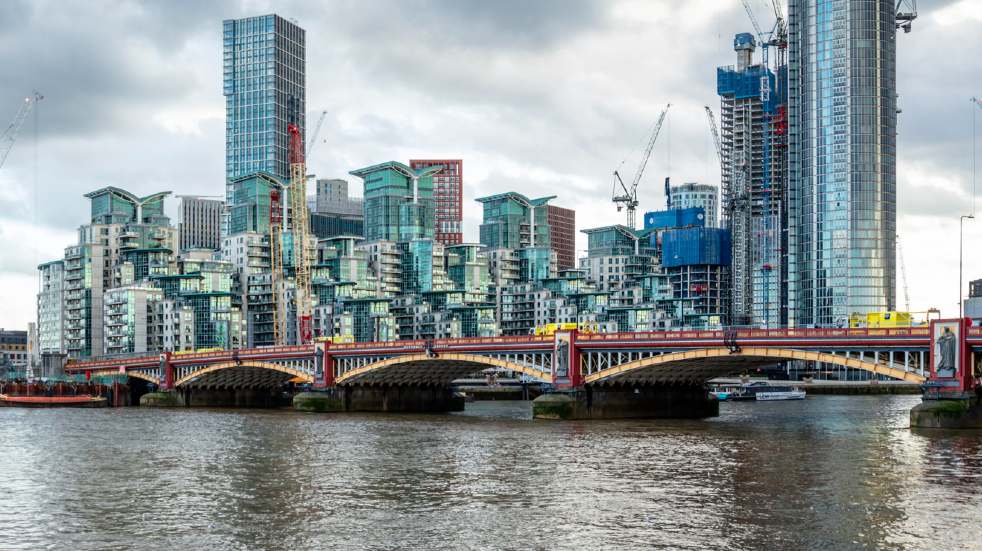
A hidden secret on Vauxhall Bridge that most will miss, is a detailed recreation of St Paul’s Cathedral. The model was added during the construction of the bridge in 1903, as one of eight bronze figures designed to highlight a variety of trades and virtues (including architecture).
35. A secret Roman temple
Located beneath Bloomberg’s London headquarters is a free-to-visit ancient roman construction. Excellent curated, London Mithraeum was excavated during the construction of the office and features a temple to the god Mithras as well as a variety of artefacts discovered in the area.
36. Domino phone boxes
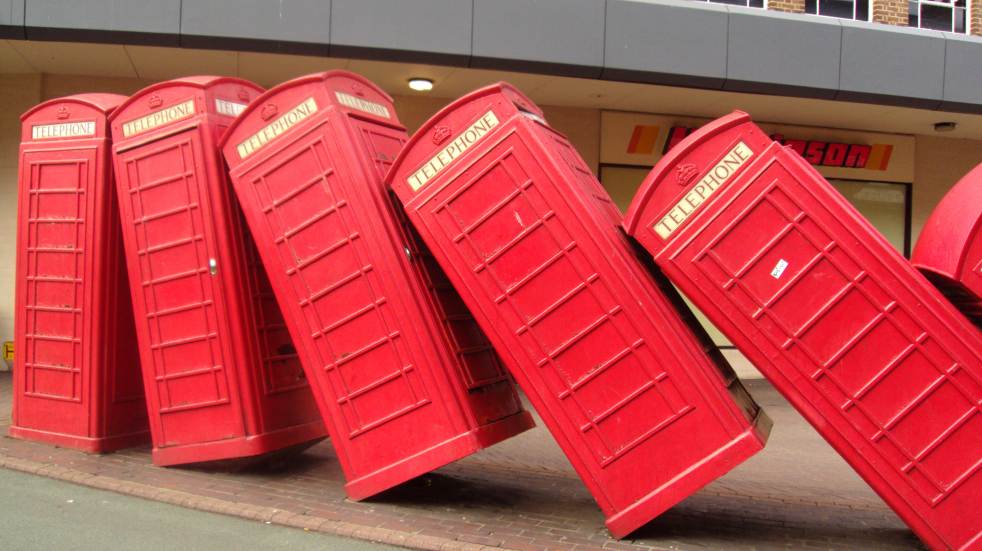
An art piece conceived by David Mach and installed in 1989, “Out of Order” features a dozen phone boxes leaning against one another like dominoes. While it isn't quite as iconic as its inspiration, this public art piece has become one of Kingston's most famous monuments, delighting locals and tourists alike.
37. A waterside mortuary
Right at the heart of one of London’s most famous landmarks, Dead Man's Hole, is an alcove beneath the northern side of Tower Bridge. Effectively a mortuary right on the water's edge, the area is a relic from Victorian times, when bodies washed ashore on this stretch of the Thames with startling regularity.
38. The only statue of Henry VIII
The gate of St Bartholomew's Hospital is adorned with London's only public statue of King Henry VIII. The statue of the king, resplendent in his distinctive Tudor garb, was completed in 1702 and is still standing today.
39. A magical train station platform

With a unique sculpture plucked right from the story, Kings Cross Station pays tribute to its part in Britain's best-selling book series. Look for a marker identifying Platform 9 3/4, beneath which, a baggage trolley can be seen disappearing into the famously enchanted barrier.
40. Earls court Tardis
The Metropolitan Police placed this police box on the street in 1996 to combat crime Earls court. Based on the original 1929 version designed by Gilbert Mackenzie Trench, the box is perhaps better known for its association with the Doctor Who television series in which a similar blue box features as the Tardis.
41. David Bowie mural
A creative memorial to the great musician, located just around the corner from his birthplace. On the wall of Morley's Department Store, near the Brixton tube station, is a mural of David Bowie that’s as vibrant and colourful as the artist himself.
42. A Lilliputian police station
Britain's Smallest Police Station, tucked away in the south-east corner of Trafalgar Square was built in 1926. Sadly, no longer in use, the initial purpose of the station was to house a single police officer, though it could also hold up to two prisoners at a time.
43. Quantum cloud
Taller than his Angel of the North, Antony Gormley's contemporary sculpture, Quantum Cloud, is positioned near to The O2 in London. Commissioned especially for the site, this unique cloud of steel rods is organised by a randomised computer algorithm and was completed in 1999.
44. Brown Hart Gardens
Built atop a concealed electrical substation, Brown Hart Gardens is a raised terraced garden located in Mayfair, just south of Oxford Street in London. With ample space to sit and relax, the best time to visit is during Wimbledon when a large screen is erected on which to watch all the action – almost as good as Murray mound!
45. A city-centre beach
Situated close to the Site of Execution dock featured earlier in this list, the Pelican Stairs beside the Prospect of Whitby pub have a similarly gruesome history. That’s not the main reason to visit however, at low tide, the stairs will deliver you out onto the closest thing to a beach you’ll find in London – on a sunny day it’s hard to believe you’re still in the big smoke.
46. We gonna rock down to…
The Electric Avenue namechecked by British musician Eddy Grant in his 1982 single of the same name can be found the Lambeth district of South London, specifically in Brixton. In the late 1800s, it became the first market street in the world to be illuminated solely by electricity. Today it’s marked by a striking neon sign bearing its name.
47. Memorial to Mahomet Weyonomon
A Mohegan chief who died while petitioning the king to protect his tribe is commemorated by a touching sculpture outside London's oldest cathedral. A memorial to Mahomet Weyonomon, the chief of the Mohegan tribe, stands outside Southwark Cathedral after he travelled to London in 1735 to beg King George II for justice for his nation before sadly dying of smallpox at the age of 36.
48. Kyoto Garden
The Kyoto Garden is a one-of-a-kind Japanese-style park ideal for peaceful thought, meditation and relaxation. A 22-hectare park in it was opened in 1991 as a gift from the city of Kyoto to honour Japan's longstanding friendship with the United Kingdom.
49. Philpot Lane Mice
The 23 Eastcheap building on Philpot Lane, (situated in the shadow of the Walkie Talkie building) was built between 1861 and 1862 as offices and warehousing. A charming block in its own right, it’s perhaps more notable for its unusual carving of two tiny brown mice, perpetually locked in a struggle over a piece of cheese on its wall.
50. WW2 Stretcher railings
A blink and you'll miss it sight, some of the fences on South London estates are fashioned from repurposed World War II relics. Initially employed by Air Raid Protection (ARP) officers during the Blitz, these stretchers were later recycled as railings on post-war housing estates in Peckham, Brixton, Deptford and Oval.
Do more with Boundless
To benefit from amazing offers, along with dozens of other deals on holidays, motoring services, experiences, shopping and more, join Boundless today. To find out how, visit our dedicated membership page.

